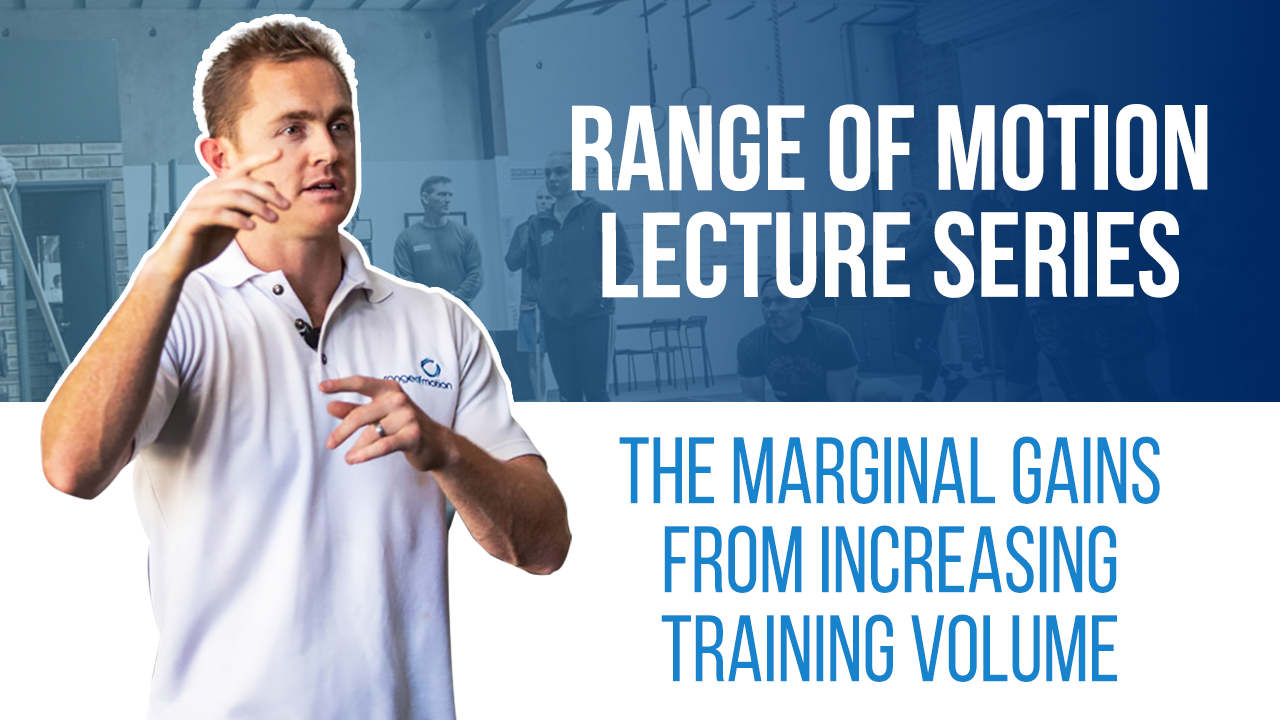Transcribed from video:
– When people first start exercising, or they go from doing no sessions, no training, to one exercise session a week. So they go from from doing nothing to doing something, just a small amount. What happens to the benefit, the bouts of training sessions, looks something like this. If someone’s not doing any exercise, and this is from a general health point of view, a general population, as well as an athletic population. If someone’s doing no exercise, they get, surprise, surprise, zero benefit from that exercise. If someone does a single exercise session a week, they just train once a week, suddenly they go from zero to getting an enormous amount of benefit. There’s a huge jump to go from nothing to something. When they then, go from one to two, this doesn’t suddenly double. They aren’t going to get twice as much benefit from two sessions as they do from one. Maybe they get 50% more benefit. And then when they go from two sessions a week to three sessions a week, maybe now there’s another 25% benefit. And what you’ll see you’re getting is this shape, where we get these marginal gains where it does improve, but that improvement becomes less and less and less as we go. And if we smooth out that curve, it looks something like that. And it gets to a point, where you’re doing so much, and you’re adding so much, and there’s such tiny little improvements, that it’s hardly worth it. And then, if you’re thinking that more is better, and if you’re defining efficiency as how much can we get done before we break down, eventually, you get to the point of overtraining, and the benefit crashes. And this is walking that fine line of overtraining, which we’ll talk about when it comes to recovery, tomorrow. So this is where we can impact the health of the general population. In going from zero to one, from one to two, from one to three. That’s where we can have the greatest impact and the greatest effect there for people. However, if you’re a CrossFit Games athlete, you need a .25% improvement, ’cause that may be the difference between first and 40th. So the more important this is to someone, that they are at their absolute peak, the more you have to flirt with this line of overtraining. Because your job is to get to there, whatever number this happens to be. That’s your job, is to get to the point where, if you were to put one more point of stimulus on the neuromuscular fatigue rating scale into your week, you would overtrain, you would collapse, and you’d do too much. Which is tricky, you’re walking a tightrope. But for most people, they don’t need to be sitting here. And this is why top level athletes don’t necessarily have a long life expectancy. Because, we could also call benefit health. Once they get to a certain point, health starts to drop off. Health starts to be jeopardised, because this person wants to be a marathon runner. The stereotypical marathon runner, they’re not healthy-looking people. They’re probably not going to live a long time. They’re probably not going to make it much past their early 70s, in general. Because, they have accepted, and no judgement , it’s fine, because that’s what their goals are. They’ve accepted that that’s going to be the case.





